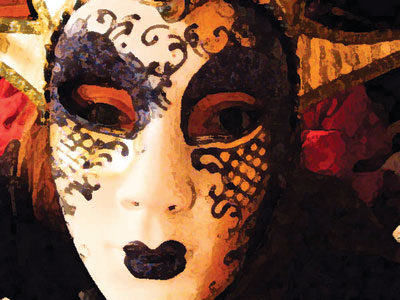All Nonfiction
- Bullying
- Books
- Academic
- Author Interviews
- Celebrity interviews
- College Articles
- College Essays
- Educator of the Year
- Heroes
- Interviews
- Memoir
- Personal Experience
- Sports
- Travel & Culture
All Opinions
- Bullying
- Current Events / Politics
- Discrimination
- Drugs / Alcohol / Smoking
- Entertainment / Celebrities
- Environment
- Love / Relationships
- Movies / Music / TV
- Pop Culture / Trends
- School / College
- Social Issues / Civics
- Spirituality / Religion
- Sports / Hobbies
All Hot Topics
- Bullying
- Community Service
- Environment
- Health
- Letters to the Editor
- Pride & Prejudice
- What Matters
- Back
Summer Guide
- Program Links
- Program Reviews
- Back
College Guide
- College Links
- College Reviews
- College Essays
- College Articles
- Back
No-Face’s Redemption
Of all the classic animé films Miyazaki Hayao has made, Spirited Away holds an irreplaceable position in my heart. A neglectable minor character in the movie, No-Face, is a lonely spirit who lives under a wooden bridge in front of a bathhouse. No one knows who he is, for his face is hidden under a mask. His life is plain and neglected until the day he meets Sen, a 10-year-old human girl who comes to the spirits’ world by accident; like a freezing man who sees a fire on a cold winter day, he is attracted by Sen’s purity and follows her to the bathhouse. From there, he begins his quest for love and self-knowledge, starting with a dark period of time in the bathhouse, and following by a bright transformation being led by Sen, which ultimately leads to his rebirth in the ocean. From No-Face’s journey, a more profound theme rises to the surface—the opposition between nature and civilization.
In the first half of the movie, Miyazaki uses No-Face’s negative transformation in the bathhouse to demonstrate how one is polluted by the dark side of society. Catalyzed by all the extravagant and deceiving activities going on in the bathhouse, No-Face’s need to interact with people gradually grows into a consuming desire to build relationships with others through money. He starts to defraud others spirits, using pieces of gold made out of dirt to pretend he is a rich man. His scheme soon brings him a handful of followers; they worship him with all kinds of delectables, hoping to earn some extra money. Moreover, the apparent shift in his speaking ability also signals his fallen : While living under the bridge, his reclusive nature prevents him from speaking with others. The gentle rasps through his throat are like the murmuring of a baby, which exemplifies his innocence. However, after he goes to the bathhouse, the fact that he learns how to talk—from mimicking other spirits’ words to recklessly expressing his own feelings to people—symbolizes his loss of innocence.
Struggling between his natural characteristics and the temptations from society, No-Face is redeemed by Sen, who acts as a helper and drags him out of the swamp of corruption. No matter how rudely and over-confidently he acts upon other spirits, when he sees Sen, the person who brings him out of his own lonely little world, No-Face suddenly turns back to a shy and self-conscious little boy. Sen is the only one who can trigger the remaining trace of innocence deep inside his heart. “They are all for you, Sen. Please take them,” he says, handing all the food he received to Sen. Nevertheless, unlike other workers who will do anything for money, Sen turns him down disappointedly. “What you offered is not what I want,” she says in disgust. Mad at Sen’s response, No-Face goes crazy and starts voraciously swallowing spirits around him. He doesn’t really care about what other spirits think about him, but a single word of contempt from Sen can make his heart break. When he acts crazy, Sen becomes his savior by feeding him the magical clay ball she got from the River God. He then vomits out all the spirits he has eaten— the desires and vanity from the real world, and returns to his true self, a timid and loving spirit who can only utter wordlessly.
Though supportive in every way, Sen can only break No-Face’s bad habits; it is nature itself that purifies No-face’s heart and changes him as a person. In the ocean, No-Face once again instinctively follows Sen. The waves almost make him trip, but he never thinks about going back. The shot freezes for a few seconds while he marches through the water with alacrity; he twists his body while walking, feeling the interaction between him and the clear sea water, as if he is absorbing energy and confidence from the ocean. The wind from the sea is so strong that it blows up a corner of his mask; audiences can imagine him smiling under his mask from his cheerful body movements. This scene in the movie flashes by in less than a second, but a careful viewer is able to interpret the depth it contains: the loosened mask on his face symbolizes a new stage in his life. Like a butterfly ready to break from the cocoon, No-Face finally finds the courage to start a new life in the natural world.
No-Face is the epitome of all ordinary people in the word; the mask on his face is the proof. People can easily lose touch with what they want in a civilized society because of the enormous temptations of wealth and vanity surrounded them; however, neither money nor adulation could fill in the holes of lust and solitude in their heart. At the end, they can only find their true selves through self-examination and interactions with nature.

Similar Articles
JOIN THE DISCUSSION
This article has 1 comment.

0 articles 0 photos 1 comment